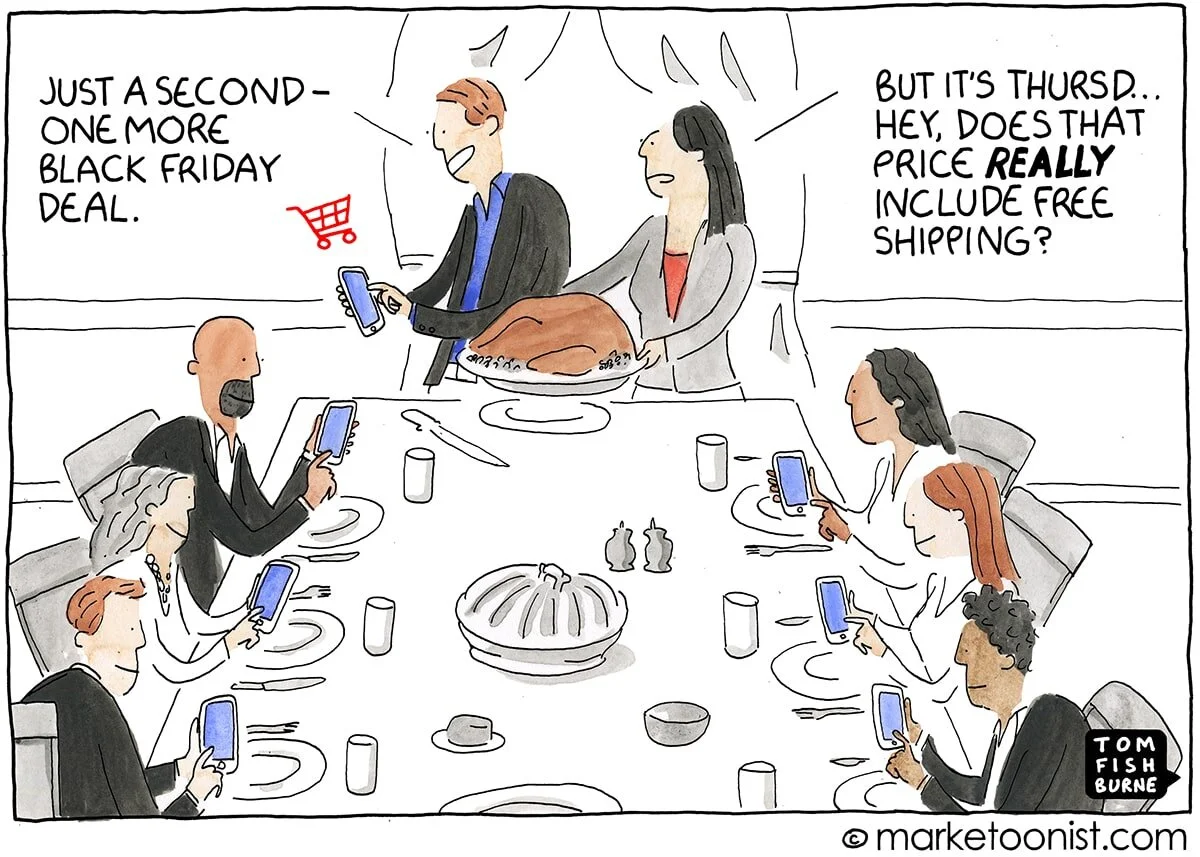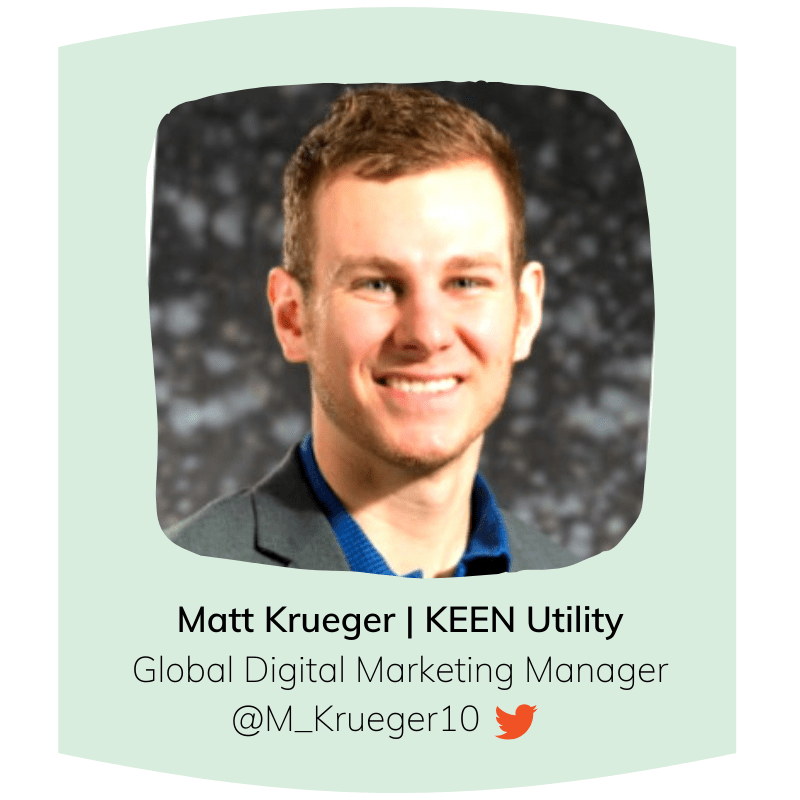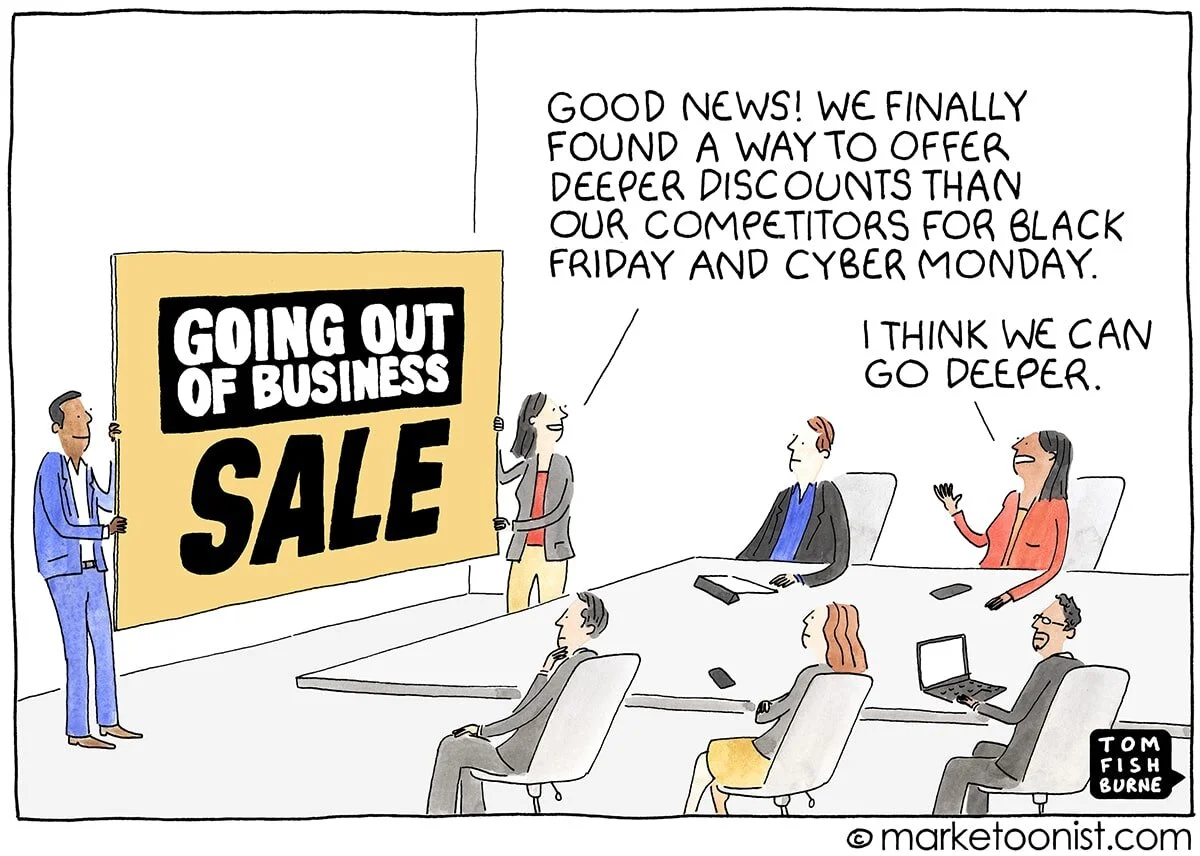Behind the Scenes of 2019 Black Friday / Cyber Monday
Black Friday/Cyber Monday (BFCM) has grown into one of the most popular national holidays over the past few years for both brick and mortar retailers and online retailers. Holiday shoppers spend an average of $1,007.24 each during the Thanksgiving weekend, making it the largest shopping weekend - especially online shopping, accounting for over $7.9 billion of online sales in 2018 - of the year. This year, Adobe Analytics reported a 14.5% increase of online shopping - a record high.
For most marketers, preparation for Black Friday and Cyber Monday campaigns takes place weeks in advance.
Setup asked a few retailers from all industries and backgrounds about their experience preparing for the big day(s) - giving us a behind the scenes look into a marketer’s preparation for Black Friday and Cyber Monday:
#1 - Preparation for Black Friday/Cyber Monday is key.
As it is with any marketing campaign, preparation is vital. Every facet of marketing - such as staying true to the brand’s objectives, understanding the consumer’s problem, and using data to inform strategic decision making - is imperative.
Preparation during Black Friday and Cyber Monday includes deep consideration around:
timing,
pricing,
inventory,
online promotions, and
objectives.
Timing - Start the campaign before the big holiday weekend.
Rolling out campaigns with enough time in advance causes awareness that allows consumers to adequately plan and select what deals they want to pursue. Promoting too early comes at a risk, however. Early ads might get lost in other seasonal ads, such as Halloween promotions, or forgotten by the time the Thanksgiving holiday rolls around - so be diligent of timing.
Since Wisconsin Dairy does not directly sell to consumers, but instead connects cheese lovers with retailers, Digital Content Director, Ben Kroeplin, explained, “We roll out our inspiration campaigns weeks ahead of the big shopping days. When black Friday/Cyber Monday rolls around, we can focus on engaging with shoppers to help them find their next favorite cheese.”
Pricing - Deals, deals, and more deals!
Customers are accustomed to sales during the holiday season. Because of this mindset, retailers are extra attentive to pricing.
Matt Krueger, the Global Digital Marketing Manager of KEEN Utility stated, “For KEEN Utility safety footwear, it’s one of the few times we allow our direct to consumer (DTC) channels, distributors, and retail partners (Amazon included) to promote our products off-price, since we have a strict minimum advertised price (MAP) policy. At 20% off across the board, our pricing strategy is straight-forward and the time frame is also clear-cut - Black Friday through Cyber Monday, no exceptions. As for product priorities, we focus on moving heavy inventoried styles we know are discontinued in the following year without losing focus on high-demand products.”
Inventory - Evaluate shopper trends to influence stock.
Keith A. Neely, the Vice President of eCommerce, Digital, Customer Support, and IT at Case-Mate shared that a major aspect of planning is inventory planning. On a day where online shopping and in-store sales spike, retailers need to be extra prepared to avoid going out of stock. Case-Mate plans their inventory by evaluating consumer behavior to understand the year’s hottest trends.
To avoid overbuying merchandise, retailers need to know their stock. Keeping an eye on hot trends throughout the year, especially during the holiday season, will inform the ordering and planning processes. On the other hand, if Black Friday or Cyber Monday comes along and there isn’t enough merchandise, then retailers must have a strategy for backordering (by updating their website, granting a consolation offer, etc.) or going above and beyond in customer service.
Online Promotion - Online presence matters.
The Thanksgiving weekend has turned into a shopping extravaganza over the last decade and, as online retailers like Amazon become more appealing due to convenience and price, retailers need to think strategically about their online presence.
Matt gave further insight into KEEN Utility’s approach to online sales during BFCM: “From a pay-per-click (PPC) perspective, we will execute a multi-channel approach for our e-commerce channel, and on Amazon we’ll deploy a hybrid approach of Sponsored Product ads and Sponsored Brand campaigns promoting ‘up to 20% off messaging’ driving traffic to our Amazon store where consumers can shop for all off-price products.”
By using these digital insights based on consumer behavior, stores like KEEN Utility can plan a more effective marketing strategy. Matt mentioned that they have noticed trends of mobile first searching and purchasing. “From an Amazon outlook, we know +/- 50% of all internet product searches start on the platform and even higher for new products.”
He continued, “We monitor and see consumers are bouncing back and forth from our DTC website to Amazon for product research and checking reviews while in-store. Instead of constantly competing with Amazon, we’re looking at how we can leverage the platform to tell our brand story, educate the consumer, and work together to have the strongest presence possible so we can reinforce the consumer that they are making the correct choice on purchasing KEEN Utility products, regardless of the channel.”
“We’re looking at how we can leverage the platform to tell our brand story, educate the consumer, and work together to have the strongest presence possible so we can reinforce the consumer that they are making the correct choice...”
Objectives - Align the cyber deals and in-store sales with the overall campaign goal.
No matter what, the marketing campaign needs to connect to the business’s overall goal for the holiday. Keith shared that, “Our goal is to offer the best discount possible while also trying to drive an increase in Average Order Value (AOV).”
#2 - Understanding consumer preferences is the pathway to success.
In order to increase conversions, retailers need to understand consumer preferences. Ben observed that consumers prefer ordering food online as opposed to in person. The difference in in-store sales has determined retailers’ focus when it comes to technology and online items.
“Consumers are more comfortable ordering food online. From grocery delivery services, like Instacart, to shipping directly to someone’s doorstep, some retailers have done a great job embracing technology to make a better consumer experience. That has made it much easier for people to find the exact cheese that has everyone talking,” said Ben.
Keith said, “[Case-Mate] focuses on customer segmentation and truly tries to anticipate what actions will drive each customer segment to convert. Obviously, during BFCM consumers are looking for a deal. Our focus is not just on discounting but providing value in order to drive average order value (AOV) and exceptional customer service. We've noticed that consumers respond to a sense of urgency. Anything that drives immediacy tends to increase conversion rates.”
“Our focus is not just on discounting but providing value in order to drive average order value (AOV) and exceptional customer service.”
Hubspot research uncovered that “93% of customers are likely to make repeat purchases with companies who offer excellent customer service.” Superior customer service increases loyalty which, in turn, leads to more sales.
#3 - Tracking holiday campaign performance influences future Cyber Monday and Black Friday marketing tactics.
Though many retailers review their analytics periodically, it’s important to be hyper-focused when it comes to tracking campaign performance for the Thanksgiving holiday shopping season.
Ben expressed, “We do a deep dive into all of our analytics – from SEO to paid – once per month, but we typically watch campaigns unfold in real time. For a major event, like Cyber Monday, we’ll roll the campaign out several weeks ahead of time and watch the analytics really closely so we can adjust the targeting and messaging ahead of the big day.”
Measuring in real time is more effective particularly because year to year (YOY) tracking is tricky with moving target holidays like Thanksgiving.
“Going in, expectations have been set specifically as they relate to the timing of BFCM vs. last year. From a broader perspective, we have also taken into account that there are six fewer days of holiday shopping between Thanksgiving and Christmas,” said Keith.
He continued, “During the event weekend, we are constantly monitoring engagement and conversion on an hourly basis. Our goal is to pull whatever levers are necessary to ensure at least a 30% increase vs. last year. In this instance, Google Analytics is our primary reporting tool.”
Matt emphasized how Google Analytics is a primary contributor to KEEN Utility’s data analysis: “For our DTC and wholesale channel, we have an in-house Analytics team using Google Analytics and other 3P providers to assist us with analyzing different parts of the business (retail sell-through, wholesale bookings, consumer data).”
Matt continued, “We use [Amazon’s] vendor suite which provides a good deal of selling information, onsite analytics, consumer demographics and advertising results; which informs our GTM and product segmentation strategy. The next step for KEEN Utility is putting all of this information together so we can get a holistic view of what levers are really driving the business across any channel.”
Thought and precision envelop a successful Thanksgiving shopping campaign. Now that it is over, marketers will measure the tactics and strategies that performed well compared to prior years and begin formulating next year’s offerings.
















Over the past year, we’ve watched the following patterns emerge across seemingly unrelated sectors: rising consumer expectations, demand for authenticity, growing complexity, and the tension between automation and human connection.
We interviewed multiple marketers from an array of industries in our blogs below, and we discovered consistent trends across the board. Check out all of our industry blogs throughout 2025 from leaders at Blackbaud, Hiscox USA, Mimedx, MONPURE, Kimberly-Clark Professional, and more.